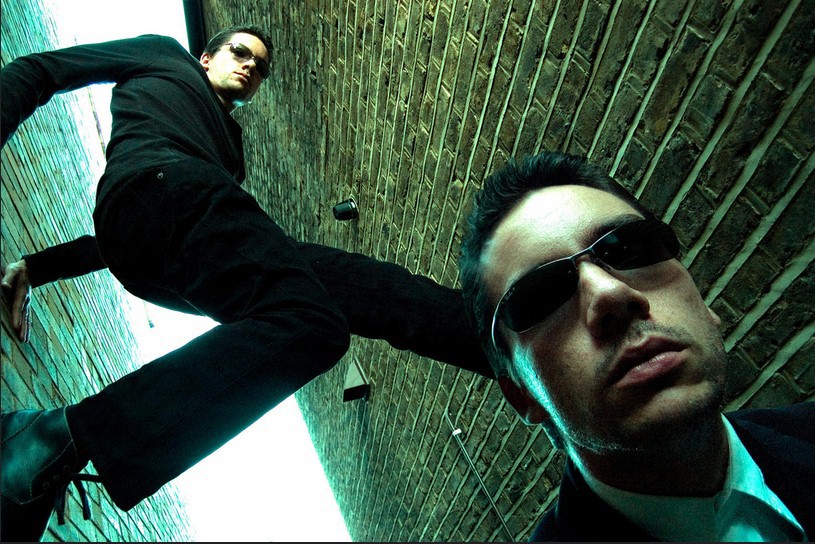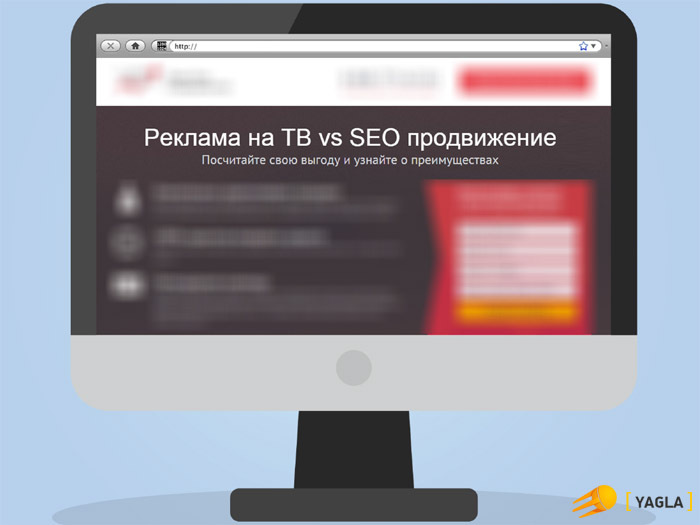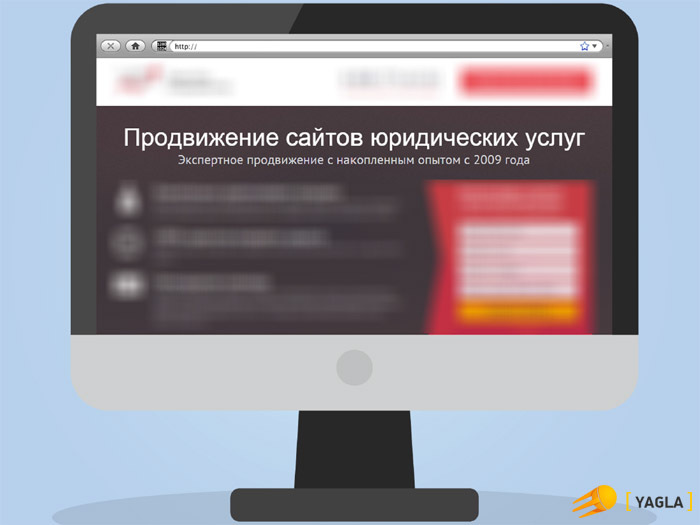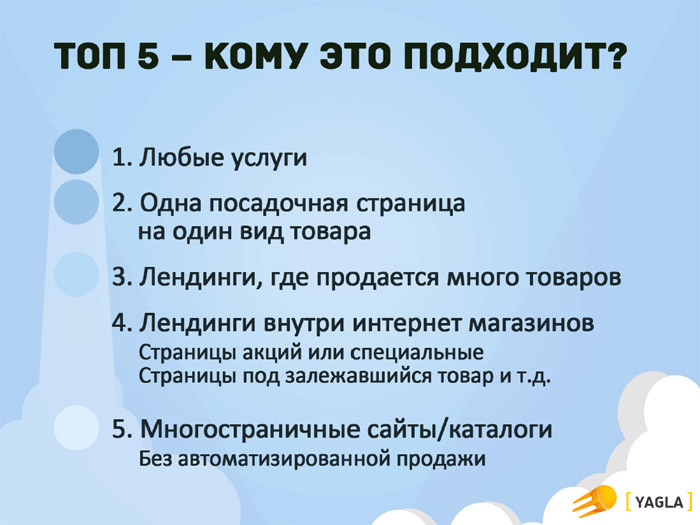3 cases of introduction of dynamic content, which increased the return on contextual advertising 3 times

The life of a director is dangerous and difficult. It is not so easy to collect targeted traffic, conjure over the reduction of the price of a click, fight for positions with competitors. We ourselves went through this until we are tired of fighting for hundredths of the CTR.
In this article, we describe how to get out of the competition with the help of dynamic content, we show the results of conversion increase with specific examples.
About Competition
')
Compared to other promotion channels, contextual advertising has the largest budgets of the last five years and their size continues to increase. At the same time, the number of Internet users is growing much slower than cash infusions.
For example, in 2014 the volume of the contextual advertising market grew by 30%, while the number of users increased by only 9% (data for Russia).
This means that the cost of attracting a client from contextual advertising is growing by leaps and bounds.

Businesses need to urgently increase the return on context or reduce the cost of leads. To keep the current margin, subject to increased competition five times the cost of leads should be 5 times less, without loss of quality.
We tried many options to improve the impact of contextual advertising and found a way that allows you to increase the efficiency in some cases several times. Not 30-60%, but actually 2-3-5 times, depending on the source data - this is dynamic content.
The essence is in changing the landing page content depending on the user's search query. This is a combination of traffic hypersegmentation and offer personalization (sales offer).
How it works?
Typically, traffic from contextual advertising on a particular product or service leads to one landing page. At the same time, users have different reasons to buy the same product - just look at the search phrases for which they fall on the site.
We decided to show different headlines, subheadings, buttons for application forms and even pictures. So that users can see important information for themselves right on the first screen (personalization of the sales offer). This is dynamic content.
At first glance, everything is simple: take search queries from the campaign, group, write unique offers for each group (preferably several options) in substitution, conduct A / B testing, identify the most conversion options, sit and enjoy the reduction in the cost of the lead.

In fact, not so simple. We have automated a number of processes: synchronization with advertising campaigns through the API, automatic selection of the winning option, collecting and tracking statistics, setting up in a convenient tabular form the substitutions themselves. But more on that later. At the beginning about how and why it works.
Case window company
This is a regional company for the production and installation of plastic windows. Contextual advertising is the main channel that works to load production. The competition is very tough: they copy each other the location of the blocks, the structure of the pages and even the design.
The cost of clicking on key requests ("plastic windows calculator", "buy PVC windows") in Moscow, for example, comes to 84 cu. Just imagine: 2,520 rubles per click! In the regions, of course, the numbers are more modest (100-150 rubles), but still this is a lot.
If we take into account the average conversion of landing in this niche 4-5%, one application costs 2,000 - 3,000 rubles. And that's not all) The application is not equal to the sale. Let's say every third lead sets a window. Thus, the final cost of the client is 6 000 - 8 000 rubles.
What was done: all requests from the Yandex.Direct campaign were divided into large groups, because they decided to move away from maximum relevance. This principle works well when setting up contextual advertising, when the request = ad title plus the request is present in the text of the ad itself. In the case of content on the site is not enough.
Based on a search query, we built a user's portrait. Of the 234 phrases made 28 groups, for each group they wrote unique trade offers. Next, it was necessary to check how accurate the models we built. Therefore, we set up goals, allowed traffic and conducted A / B testing for each group (comparison of the substitution with the original).
Two weeks later, we received the first results: the conversion increased 1.5 times. They simply divided the requests into groups, wrote other offers for them, and from the first "shot" increased the conversion by one and a half times!
Here is how it works in the system:

It's simple: you look at the statuses of the A / B tests: the hourglass icon means that there is not enough traffic, testing continues. Green check mark - the conversion conversion is higher than the original version; "Red brick" - we rewrite and put in the repeated test.
We have done so only 4 iterations. This is not so much to positively affect business performance. The time of the tests is 1.5 months. The result is an increase in conversion by 3.3 times, while the quality of the leads remains the same. And this is without additional costs for contextual advertising. To verify this, we repeated this result many times, in different businesses.
Case SEO Agency
A similar problem with the high cost of the lead, as professional promoters are competing for the same traffic.
You can collect a ton of near-target traffic, but it is hard to convert to leads. These are such requests as: “advertising on billboards”, “advertising on TV”, “advertising on radio”, “advertising on transport”. Because the company is engaged in SEO.
We set the task of translating traffic on these requests in its own direction. Potential customers are people who are going to spend advertising budgets and choose a promotion channel. And on request "advertising on TV" a person gets to the site, and there the heading "SEO vs Advertising on TV". And three main benefits.
Plus, they took such requests: “how to promote business X” (for example, “how to promote a beauty salon” or “promote a legal services website.” Or general business requests “how to increase sales.” Accordingly, they made a substitution of headings for them:
Option 1

Option 2

In total, the project turned out 472 groups. A month later, we received an increase in site efficiency by 2.5 times, from 3.5% to 8.7% of conversions to the application.
Case wholesale deliveries
The company is engaged in wholesale deliveries from China of thousands of products, almost any item. This is not an online store, you can not put the goods in the basket. On the site the user leaves a request for a price.
Landing page was originally designed as a universal. In the first screen, you could replace anything, and the remaining screens were suitable for almost any product, since there was information about delivery, payment methods, trust triggers, etc.
A total of 10,859 commodity requests, of which 1,425 groups came out. The title was once compiled using the 4U method, and the rest was tuned to the principle of direct relevance. The user is looking for a specific product, the title is equal to the name of the product. Also, the signature to the application form: for example, "get a price for monopods."
The result is an increase in conversion by 3.6 times, from 4.8% to 17.5%. Phenomenal figure for the wholesale company!
Top 5 to whom it fits
These are situations where dynamic content works best.

1) Landing with services. As a rule, they have a very small pool of key phrases and the inclusion of near-target requests in a campaign results in a significant increase in conversion.
2) Landing for one type of product. For example, iPhones or vacuum cleaners of the same brand. Here you can perfectly work offers by competitors, methods of use.
3) Landing for a group of typical products. For example, ten woodworking machines. The user knows the task, but still does not know how to solve it. And here with the help of dynamic content we offer him a specific tool, which is displayed in the title.
4) Food landing pages inside online stores. Focus on some kind of stock, seasonal discounts or stock balances. Of course, here it is necessary to think, to work on setting up offers, since there are much more requests (for an online store, a campaign with 10,000 phrases is usually considered).
5) Multi-page sites. Why are they only in fifth place? A poor description of the goods: here it is effective to substitute only the title and text of the target action on the CTA button.
Why does this work?
There are many studies that say that in 5-7 seconds the user decides whether he will remain on this page or leave. When all competitors have an offer without personalization, that is, it is designed for everyone, and you have it in pain or need of a particular user, here you are the winner. The visitor should have an insight: “Oh, I found what I need!” It is then that works great.
What content is best done responsive?
We recommend first of all headings and subtitles, further signatures for lead-forms and CTA buttons (calls to action), and last of all images.
The most effective is to replace the elements of the first screen because of the five-second rule. On all landing pages, we recommend replacing no more than 5-6 elements. This is quite enough to increase the conversion to the maximum.

As a second example, the landing page of an online store, where the CTA button is actually in the role of a subtitle, is one of the most visible elements. Yes, this is the same page, where the button is replaced by requests from contextual advertising.
Initial option:

Substitution number 1

Substitution number 2

We recommend making 4U headers. There is a lot of information on them on the Internet, we have material on our blog.
Such headlines include utility, uniqueness, ultraspecificity and urgency. They, as a rule, are long and ugly, but in combination with hypersegmentation, they greatly increase the return. When properly configured - 2-3 times.

Fatal multilending errors
Adaptive content customization is mainly done by contextual advertising specialists. They attack the same rake, as they are used to the mechanics of Yandex.Direct. We mark the TOP 4 of the most common errors of adaptive content (for the full version, see the acclaimed material on the CPU ).
So, in the first place is the situation “Request = header”. The Yandex.Direct logic when the ad title = user request does not work in our case. More precisely, it does not show any significant increase in conversion or even reduces it.
We call this a “big relevant spot” when there is a task to stand out from a certain list (search results). But when you go to the site (landing page) you need to get to the user's need. Not "order a table St. Petersburg", and "Book a table in the best restaurant in St. Petersburg in 5 minutes without a deposit." Feel the difference?
We analyzed 342 projects, in 326 cases, due to this error, the conversion either fell or remained at the original level.
The next situation is that targets are not configured and there are no A / B tests. This means that you do not have statistics on goals, therefore, it is impossible to understand the effectiveness of the substitutions. Most often, when volumetric configuration of dynamic content, users of our system missed. To obtain the result, several iterations (steps) are needed, and without A / B tests this is impossible. How to identify items that worked worse?
In the third place is “non-adaptation”, when the content on the first screen was changed, and on the rest of the landing page it remained under the original version. When scrolling the user sees a discrepancy, there is distrust, a sense of deception, and he leaves.
And number 4 is the substitution of secondary elements that do not affect the conversion (for example, the signature on the button with “Request a callback” to “Call me back.” This is a useless job.

How can you implement responsive content?
At first, we used hand made. This is a special script, available tools in the form of GTM tags, Google Tag Manager with their counter. The problem was not even that programming knowledge was needed, but that it was hard to implement and manage the results. In addition, I had to recalculate the statistics manually. Ideal for testing if there are no others.

You can go ahead and use one of the A / B testing systems. We used Optimizely. Knowledge of programming is no longer needed, but the time for setting up a query group takes a whole lot. Moreover, if the Direct campaign was already set up, it needs to be redone in a specific way. This means that you need to set up an account so that each request group is in a separate campaign. Yes, and this process is difficult to manage, control statistics.

Therefore, we have made our own development - the service of adaptive content Yagla . We synchronize with one click Yaglu and the advertising campaign in Direct via API, mark the elements that we want to make replaceable. For this there is a visual editor, regardless of the CMS site. We put two lines of code on the site, it is as easy as setting the attendance counter. And in the form of a table we set up all the content.
The directors know that it is most convenient to do this in the form of a table: requests to the right, ads to the left. We have requests on the right, content for substitutions on the left.

And, finally, a series of automatic A / B tests. They pass under each group of requests (comparison of the substitution with the original), the statistics are collected in one place. What we did in Optimizely in 4 hours, in Yagla - in 7 minutes.
Instead of conclusion
Like any technological startup, we are developing in motion: we collect feedback from customers, eliminate bugs, “finish” the new functionality. Yes, in July we plan to launch the setting of adaptive content in Google Adwords, the test version is already ready. In a word, we go forward.
Ask your questions about the service in the comments. Your feedback is very important to us.
Head of Yagla.ru Alexander Alimov
Source: https://habr.com/ru/post/292172/
All Articles